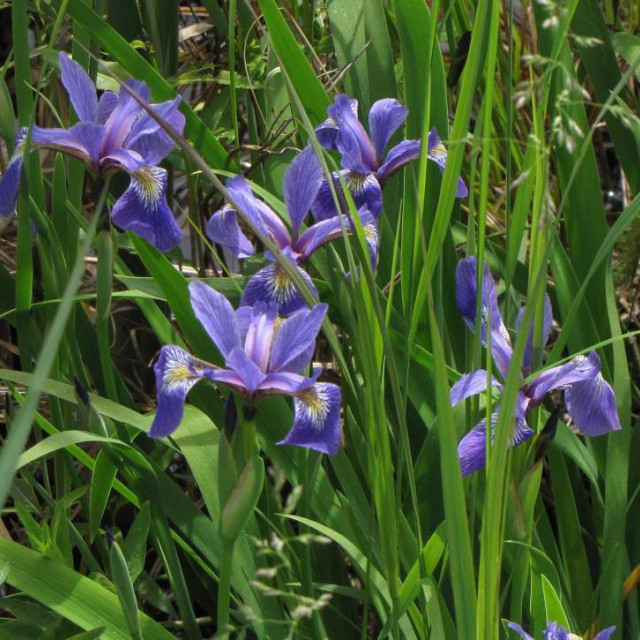COMMON NAME
Blue flag iris
SCIENTIFIC NAME
Iris versicolor
ALSO KNOWN AS
Harlequin blueflag, Larger blueflag, Northern blueflag, poison flag
Plant family
Iris (Iridaceae)
Plant group
Wildflowers and Herbs
Blue flag is an herbaceous perennial forming large clumps from its thick rhizomes, growing up to 36" tall.
112 reports
29+
OBSERVERS
112+
OBSERVATIONS
Identification hints
The leaves of irises are folded and overlapping at the base, forming a flat fan.
Did you know?
Hummingbirds are attracted to the blue flag iris. The rhizomes are toxic to livestock, hence the alternate name of "poison flag."
DISTRIBUTION IN TH U.S.
Connecticut
,
District of Columbia
,
Delaware
,
Idaho
,
Illinois
,
Massachusetts
,
Maryland
,
Maine
,
Michigan
,
Minnesota
,
New Hampshire
,
New Jersey
,
New York
,
Ohio
,
Rhode Island
,
Virginia
,
Vermont
,
Wisconsin
HABITAT
Blue flag is found in wet meadows, stream banks, marshes, and swamps.
ATTRIBUTES
Leaves
Leaves are sword-shaped and without leaf stalks, growing from the base of the plant , 4-31" long and at least 1/2" wide.
Flowers
Flowers are borne on a sturdy stalk about 36" high. They are various shades of blue and purple, the sepals (the outermost whorl of the flower) with a greenish-yellow blotch at their base and with dark venation.
Fruits
Fruit is an oblong and bluntly angled three parted capsule that opens to reveal many small seeds.
Bloom Time
Blooms in May, June, and July
See Menu
- 2021 Chicago Botanic Garden. All Rights Reserved.
-
Creative Commons
BY-NC-SA 4.0 - Terms of Use
- Privacy Policy
- Data Sharing and Citation Policies
- 2021 Chicago Botanic Garden. All Rights Reserved.



